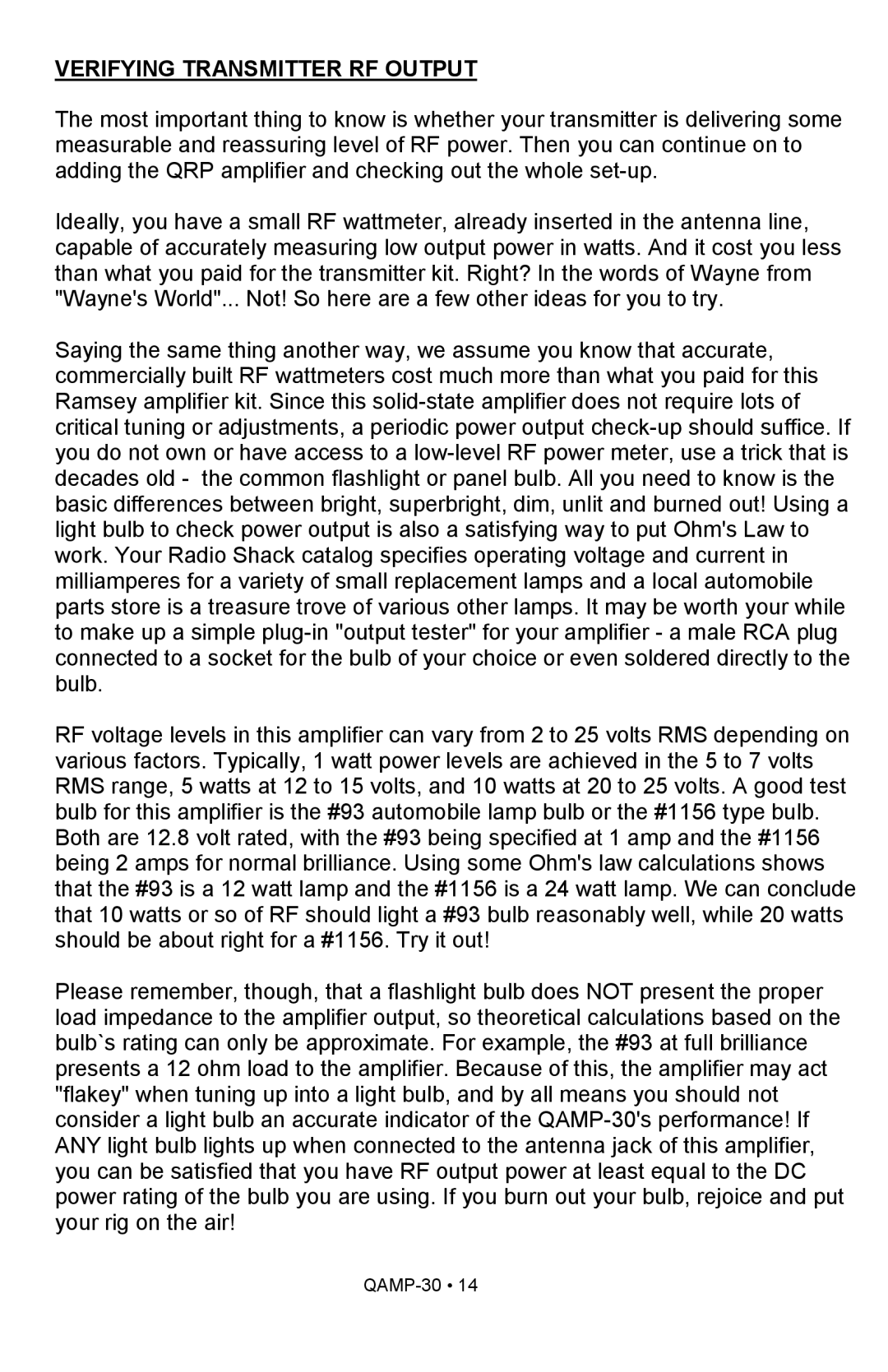QAMP30 specifications
Ramsey Electronics QAMP30 is a versatile audio amplifier designed for a range of audio applications. This compact yet powerful amplifier is specifically engineered to provide quality sound in a small footprint, making it ideal for home audio systems, portable audio setups, and compact installations.One of the main features of the QAMP30 is its robust 30-watt per channel output, delivering clear and dynamic sound that can fill a room. Its solid state design ensures reliability and durability, making it suitable for both casual listeners and audiophiles. The amplifier supports continuous operation, allowing users to enjoy music for extended periods without worrying about overheating or performance degradation.
In terms of connectivity, the QAMP30 is equipped with multiple input options. It includes RCA inputs for easy connection to various audio sources, such as televisions, DVD players, and computers. This flexibility allows users to integrate the amplifier seamlessly into their existing audio setups. Additionally, the amplifier features a 3.5mm auxiliary input, further expanding its compatibility with portable devices like smartphones and tablets.
The QAMP30 also incorporates advanced circuit design technologies to enhance audio performance. Its low noise floor and high signal-to-noise ratio ensure that audio playback is clean and free from unwanted distortion. This feature is particularly important for critical listening environments where audio fidelity is paramount.
Moreover, the QAMP30 has an integrated volume control knob, giving users direct access to adjust their listening levels easily. The simple, user-friendly interface and compact design permit versatile placement in various setups, whether on a shelf, desk, or installed within a larger audio system.
Furthermore, the amplifier is equipped with built-in protection features, such as thermal overload and short-circuit protection, safeguarding the device and connected audio equipment from damage. The overall build quality of the QAMP30 reflects Ramsey Electronics' commitment to producing reliable and effective audio products.
In summary, Ramsey Electronics QAMP30 is a compact, powerful audio amplifier featuring 30 watts per channel output, multiple input options, advanced circuit technologies, and built-in protection features. Its user-friendly design and high-performance characteristics make it an excellent choice for anyone looking to enhance their audio experience.
